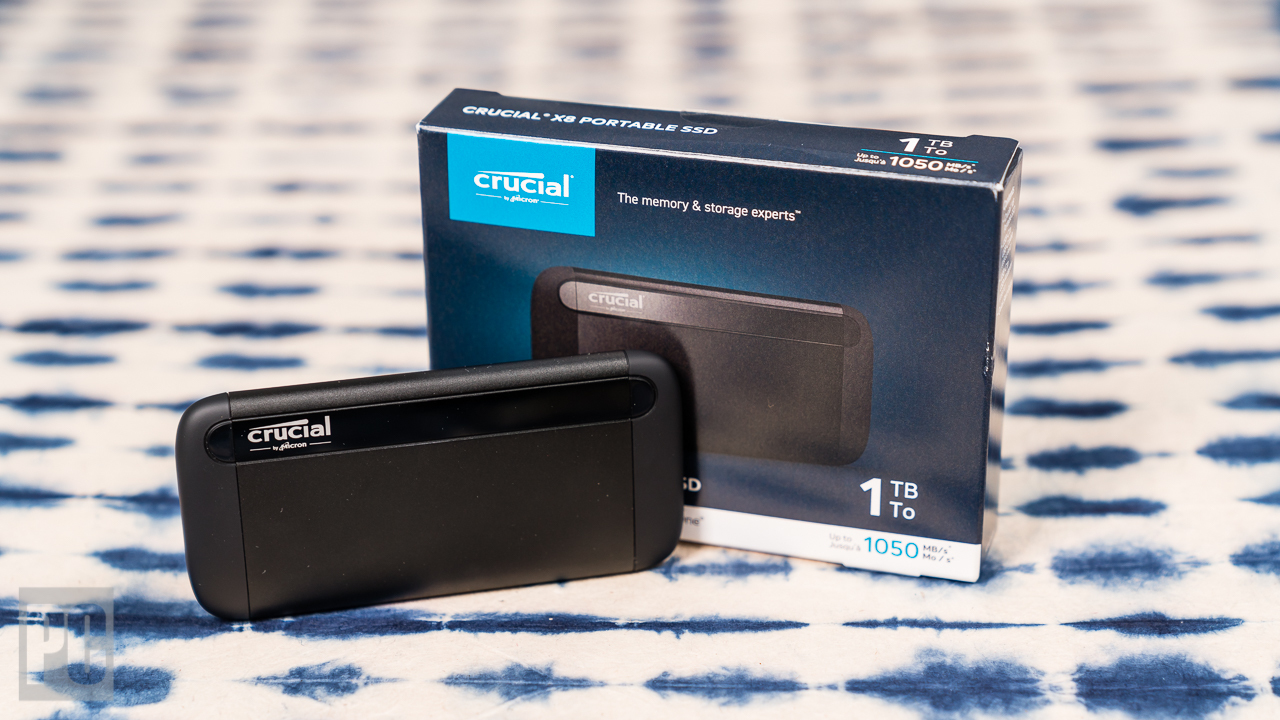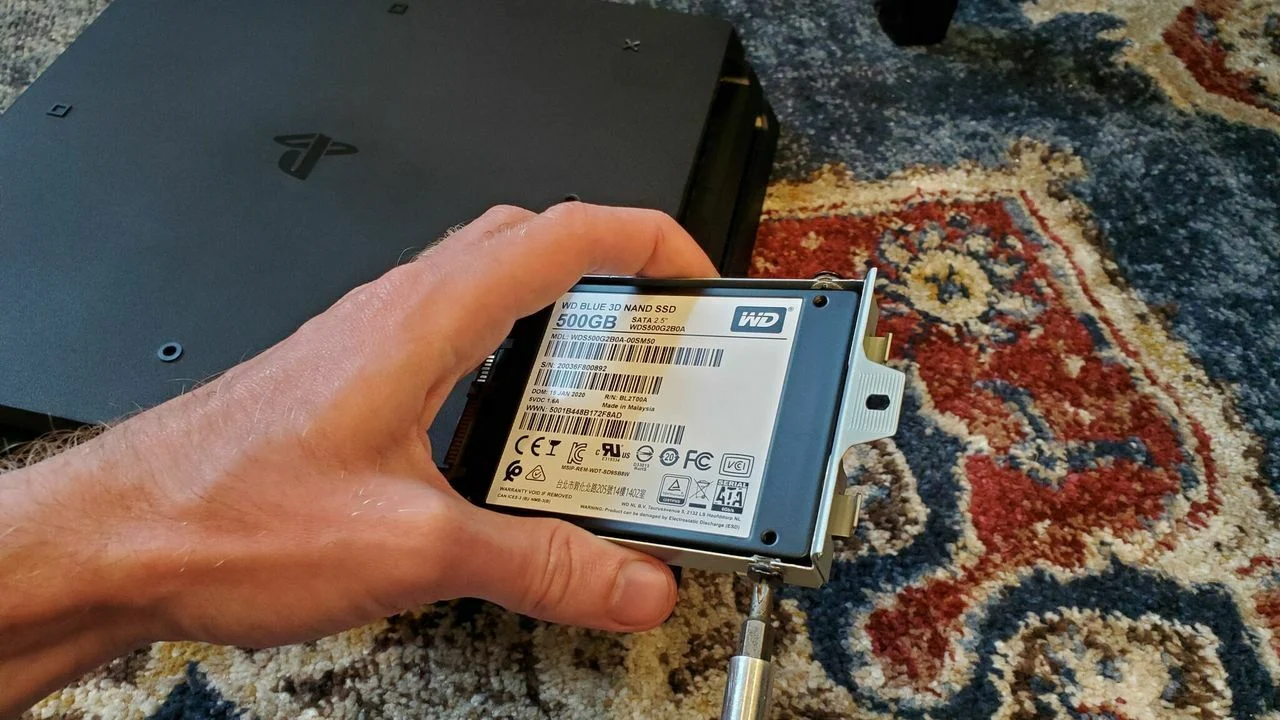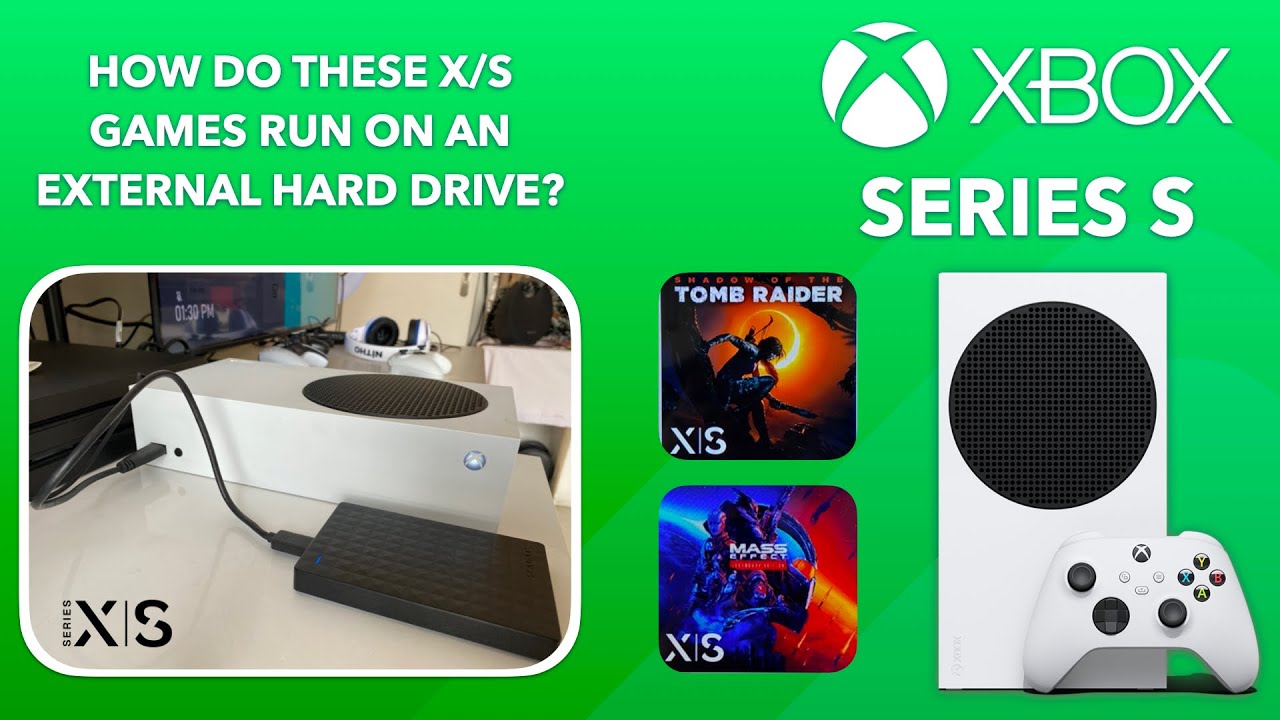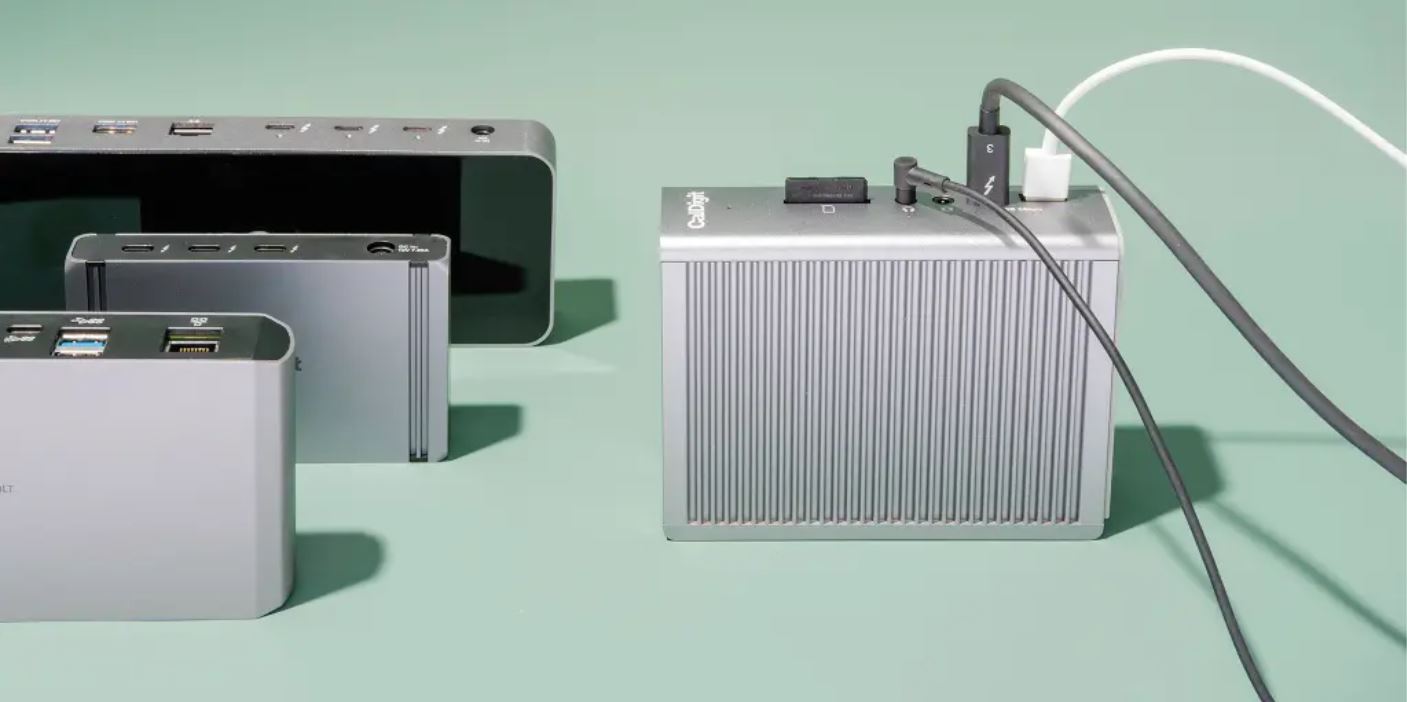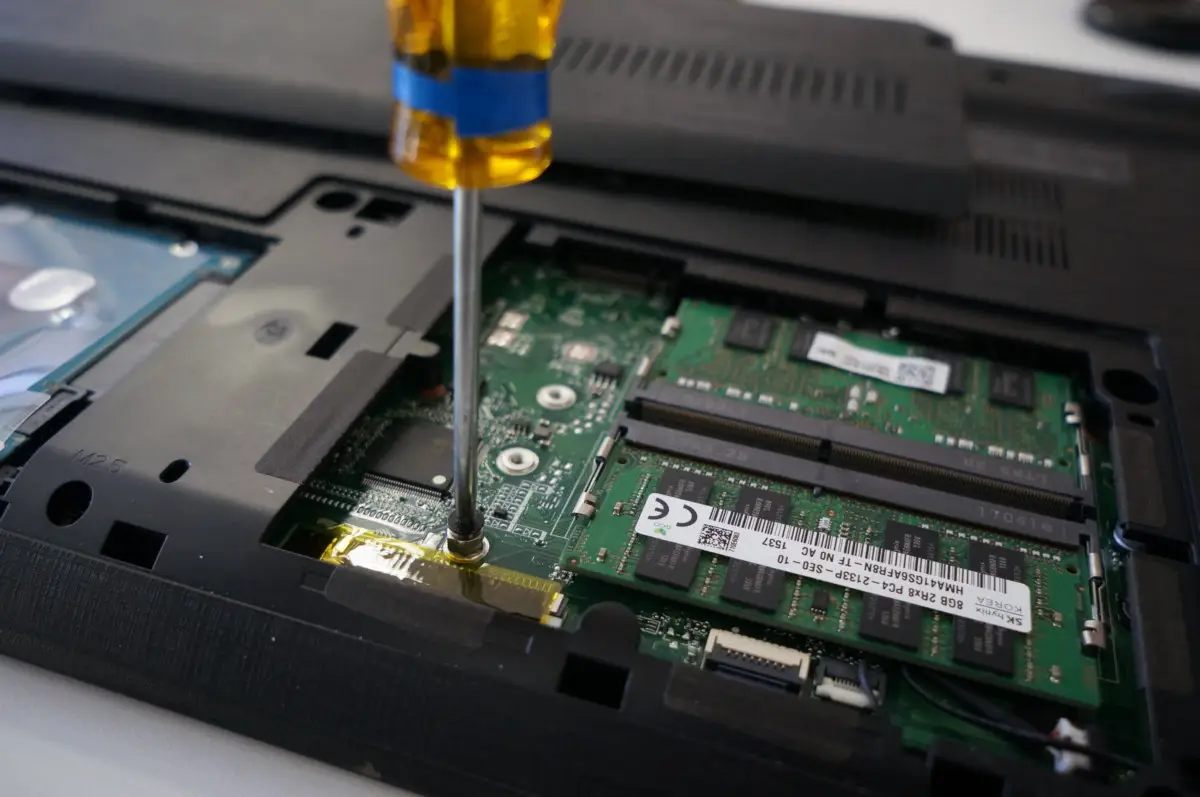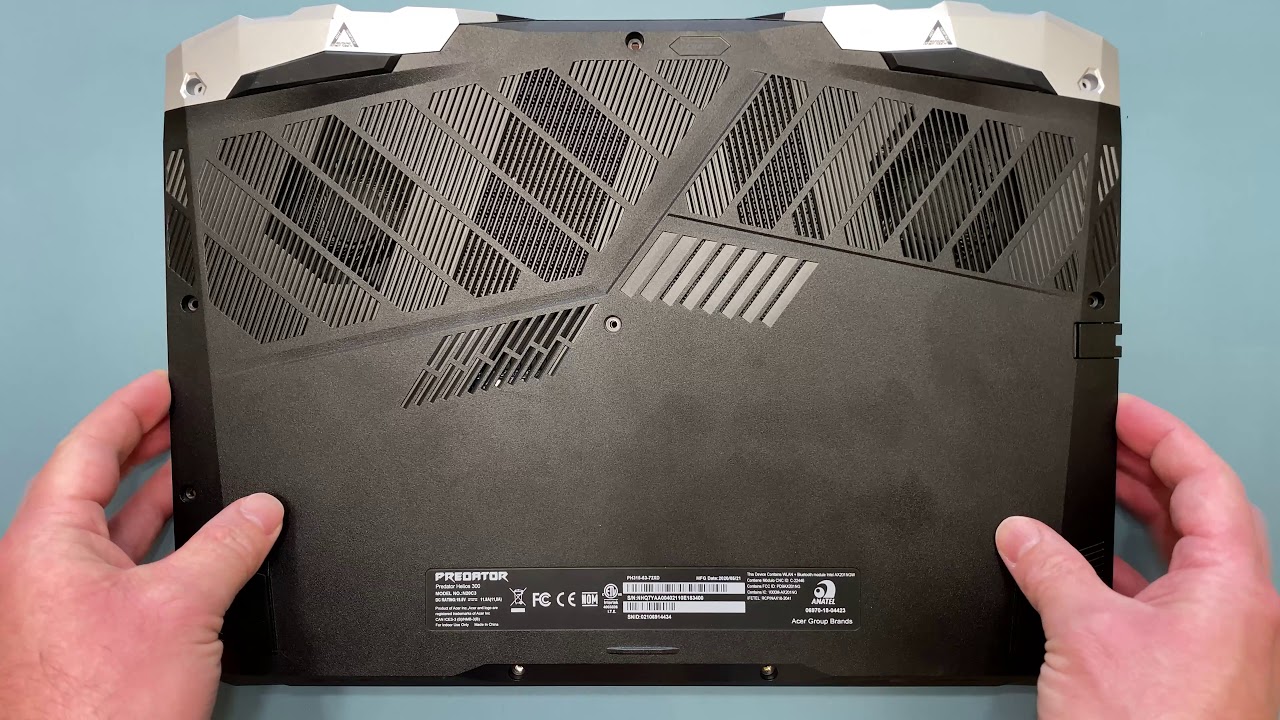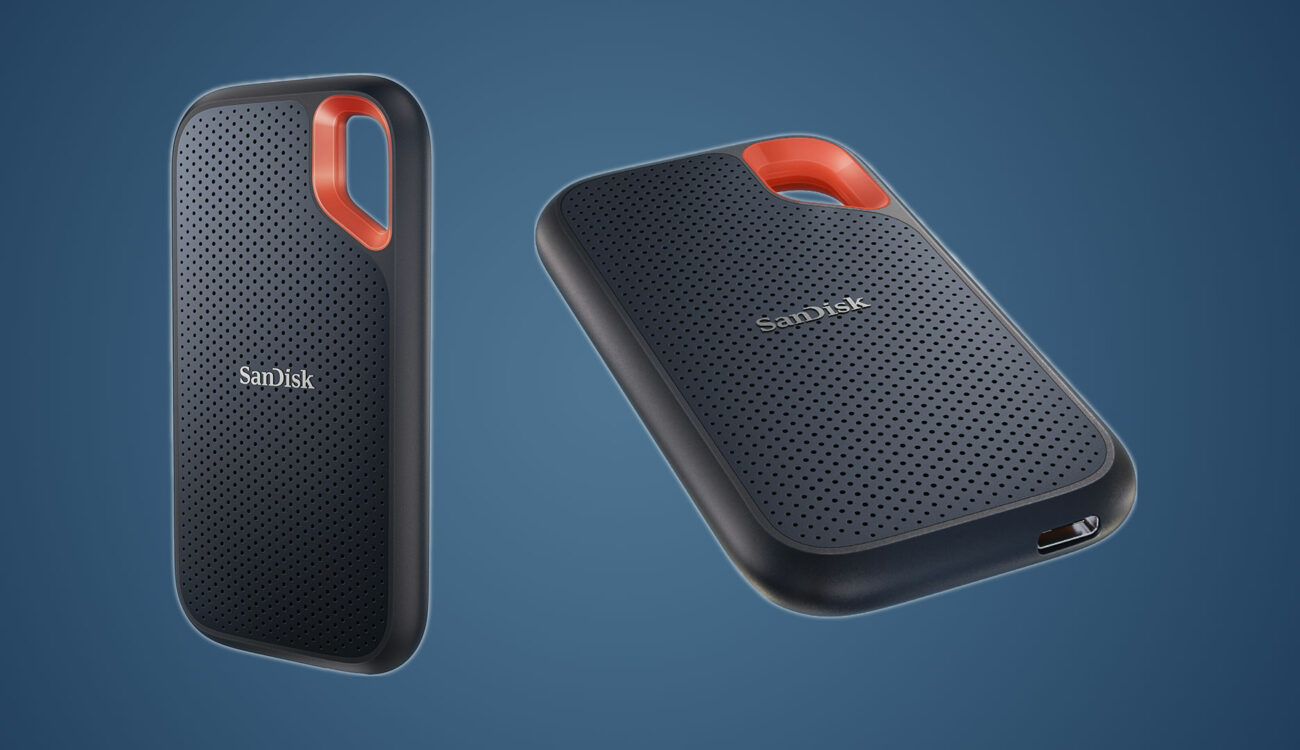Introduction
Welcome to the wonderful world of SSD external hard drives! If you’re someone who deals with a lot of digital files and values storage space and speed, then an SSD external hard drive can be a game-changer for you. Whether you’re a professional photographer, a videographer, a gamer, or simply someone who loves to keep their important files and memories safe, an SSD external hard drive can provide the storage and performance you need.
But what exactly is an SSD external hard drive? How does it differ from traditional external hard drives? In this article, we’ll explore the world of SSD external hard drives, uncover their advantages, and provide you with the information you need to choose the right one for your needs.
An SSD external hard drive, or Solid-State Drive external hard drive, is a storage device that uses solid-state flash memory to store and retrieve data. Unlike traditional hard drives that rely on spinning disks and moving parts, SSDs use integrated circuits to store data. This makes them faster, more reliable, and more durable than traditional hard drives.
So, why choose an SSD external hard drive? What sets them apart from their traditional counterparts? Let’s dive into the advantages of these powerful devices and discover why they are becoming increasingly popular.
What is an SSD External Hard Drive?
An SSD external hard drive, also known as a Solid-State Drive external hard drive, is a storage device that combines the convenience of an external hard drive with the speed and reliability of solid-state flash memory technology. Unlike traditional external hard drives that rely on spinning disks and mechanical components, SSD external hard drives store and retrieve data using integrated circuits.
With an SSD external hard drive, you can enjoy faster data transfer speeds, enhanced durability, and a more compact and portable design compared to traditional hard drives. These drives use NAND-based flash memory, which allows for lightning-fast access to your files and applications.
One of the key advantages of SSD external hard drives is their incredible data transfer speeds. Traditional hard drives rely on physical spinning disks, which can cause delays in accessing and transferring data. In contrast, the solid-state flash memory used in SSDs enables almost instantaneous data access, resulting in faster file transfers and shorter loading times for applications and games.
Another notable advantage of SSD external hard drives is their enhanced durability and reliability. Since SSDs have no moving parts, they are less susceptible to damage from physical shocks and vibrations. This makes them a great choice for portable storage, as they can withstand rough handling during travel without compromising your data.
Furthermore, SSD external hard drives have a more compact and portable design compared to traditional hard drives. They are typically thinner and lighter, making them easier to carry in your bag or pocket. Whether you’re a student, a professional, or a traveler, having a compact and lightweight storage solution can be incredibly convenient.
Additionally, SSD external hard drives offer a wide range of compatibility and connectivity options. They can be easily connected to various devices, including laptops, desktops, gaming consoles, and even smartphones. Most SSD external hard drives support USB 3.0 or USB-C interfaces, ensuring seamless compatibility with modern devices.
While SSD external hard drives offer numerous advantages, it is important to note that they typically come at a higher price point compared to traditional hard drives. However, the benefits they provide in terms of speed, durability, and portability often make them worth the investment, especially for those who heavily rely on data storage and transfer.
In the next section, we will delve deeper into the factors to consider when choosing the right SSD external hard drive to meet your specific needs.
Advantages of SSD External Hard Drives
SSD external hard drives offer several significant advantages over traditional hard drives, making them an attractive choice for individuals and professionals alike. Let’s explore some of the key advantages of SSD external hard drives:
Faster Data Transfer Speeds: One of the standout features of SSD external hard drives is their exceptional speed. By eliminating the need for moving parts and relying on solid-state flash memory, SSDs deliver lightning-fast data transfer speeds. Whether you’re transferring large files, editing high-resolution videos, or running resource-intensive applications, you can expect significantly reduced waiting times and improved productivity.
Enhanced Durability and Reliability: Unlike traditional hard drives, which are prone to damage from physical shocks and wear over time, SSD external hard drives are built to withstand rugged conditions. With no moving parts, they are resistant to impacts, vibrations, and temperature changes. This durability ensures that your valuable data remains safe and accessible, even in demanding environments or during transport.
Extended Lifespan: SSDs have a longer lifespan compared to traditional hard drives. Since SSDs don’t rely on mechanical components, they experience less wear and tear over time. This means you can enjoy a longer service life and a lower risk of hardware failures or data loss.
Lower Power Consumption: SSD external hard drives are more energy-efficient than their traditional counterparts. They require less power to operate, which can be advantageous for laptop users or individuals concerned about reducing energy consumption. Additionally, the lower power requirements contribute to longer battery life for portable devices.
Compact and Portable Design: SSD external hard drives come in sleek and slim designs, making them highly portable and easy to carry. Whether you’re a digital nomad, a photographer on the go, or someone who frequently travels, the compact form factor of SSD external hard drives makes them an ideal choice for storing and accessing your data wherever you are.
Improved File Access and Boot Times: With an SSD external hard drive, you’ll experience faster loading times for applications and games. The quick read and write speeds of SSDs allow for seamless access to large files, reducing wait times and improving overall system performance. Additionally, using an SSD as a boot device can significantly shorten your computer’s startup time, allowing you to get to work or play faster.
Silent Operation: SSDs produce no noise because they lack spinning disks and moving parts, providing a quieter computing experience compared to traditional hard drives. This can be particularly advantageous if you use your external hard drive in a quiet environment, such as a studio or library.
The advantages of SSD external hard drives demonstrate why they have become the preferred choice for professionals and individuals who prioritize speed, reliability, and durability. However, it’s important to consider certain factors when choosing the right SSD external hard drive to meet your specific needs. Let’s explore these factors in the next section.
Faster Data Transfer Speeds
One of the standout advantages of SSD external hard drives is their lightning-fast data transfer speeds. This speed is owed to the technology used in solid-state drives, which eliminates the need for physical spinning disks and moving parts.
Traditional hard drives rely on mechanical components that physically read and write data by spinning disks. This mechanical process often leads to slower data transfer speeds, especially when dealing with large files. In contrast, SSD external hard drives use integrated circuits to store and retrieve data electronically. This allows for near-instantaneous access to your files and applications.
The absence of mechanical components in SSDs allows them to offer significantly faster read and write speeds. This means that you can transfer files, whether large multimedia files or extensive databases, at a much higher rate compared to traditional hard drives.
SSD external hard drives excel in situations where time is of the essence. For example, if you work with large video files or regularly move large datasets, the speed advantage of SSDs can save you valuable time and improve your productivity. Transferring files from an SSD external hard drive to your computer or vice versa is remarkably faster compared to traditional hard drives, reducing waiting times and allowing you to access your files and applications in a snap.
Additionally, the faster data transfer speeds of SSD external hard drives can benefit gamers who need quick access to game files and data. The reduced loading times offered by SSDs can result in smoother and more immersive gaming experiences.
Furthermore, if you use your external hard drive for media playback, such as streaming high-definition videos, having an SSD external hard drive can provide a seamless and uninterrupted viewing experience. The ability to access data swiftly ensures smooth video playback without any lag or buffering interruptions.
It’s important to note that the data transfer speed of an SSD external hard drive can vary depending on the specific model and its interface. The most common interface for SSD external hard drives is USB 3.0 or higher, which provides faster data transfer rates compared to older USB 2.0 connections.
Overall, the faster data transfer speeds offered by SSD external hard drives make them a must-have for those who require quick and efficient access to their files, whether for personal or professional use. The speed advantage of SSDs allows you to save time, boost productivity, and enjoy seamless performance across various applications and tasks.
Enhanced Durability and Reliability
When it comes to durability and reliability, SSD external hard drives have a clear advantage over traditional hard drives. This is due to the fundamental design differences between the two types of storage devices.
Traditional hard drives rely on mechanical components such as spinning disks and moving read/write heads. These components are more susceptible to damage from physical shocks, drops, and vibrations. Even a slight bump or accidental impact can cause the delicate moving parts to malfunction or fail, resulting in data loss or corruption.
On the other hand, SSD external hard drives have no moving parts. Instead, they utilize solid-state flash memory, which stores and retrieves data electronically. This design eliminates the risks associated with mechanical failure, making SSDs inherently more durable and reliable.
Because SSD external hard drives lack moving parts, they can withstand physical shocks and vibrations more effectively. This makes them ideal for portable use, as they can survive accidental drops or rough handling during travel without jeopardizing your valuable data.
Additionally, traditional hard drives are more susceptible to wear and tear over time. The spinning disks in these drives eventually degrade, leading to performance slowdowns and an increased risk of data loss. On the other hand, SSDs have a longer lifespan due to their lack of moving parts. This means that you can rely on your SSD external hard drive for many years without experiencing a decline in performance or worrying about potential hardware failures.
Moreover, the enhanced durability and reliability of SSD external hard drives extend beyond physical damage. SSDs also perform better in extreme temperature conditions compared to traditional hard drives. They operate within a wider temperature range, making them more resistant to overheating or freezing. This makes SSD external hard drives a more reliable option in environments with varying temperatures, such as outdoor shoots or industrial settings.
Furthermore, SSDs excel in situations where data integrity is crucial. The lack of moving parts and the electronic nature of data storage in SSDs reduce the risk of data corruption caused by physical drive errors. This ensures that your files remain intact and accessible, giving you peace of mind when storing important documents, photographs, or other valuable data.
In summary, the enhanced durability and reliability of SSD external hard drives make them an excellent choice for those who prioritize the safety and longevity of their data. Whether you frequently travel with your storage device or work in demanding environments, an SSD external hard drive offers the peace of mind that your files will remain secure and accessible, even in challenging conditions.
Compact and Portable Design
Another notable advantage of SSD external hard drives is their compact and portable design. Compared to traditional hard drives, SSDs offer a sleek and slim form factor that makes them highly portable and easy to carry.
SSD external hard drives are typically thinner and lighter than their traditional counterparts. This makes them an ideal choice for users who are frequently on the go, such as students, photographers, or business professionals. The slim profile of SSDs enables them to fit comfortably in a bag, backpack, or even a pocket, allowing you to carry your files wherever you need to go.
The compact and lightweight design of SSD external hard drives also makes them an excellent travel companion. When you’re on a business trip or vacation, you can conveniently bring your SSD external hard drive along to back up your photos, videos, and important documents. Their small size and lightweight build won’t weigh you down or take up excessive space in your luggage.
Moreover, the compact design of SSD external hard drives is not just about portability. It also contributes to their versatility in terms of connectivity options. Most SSD external hard drives feature a built-in USB cable or come with a compact USB adapter. This eliminates the need for carrying additional cables and adapters, simplifying your setup and making it more convenient to connect your SSD external hard drive to different devices.
Furthermore, the compact and portable design of SSD external hard drives doesn’t sacrifice storage capacity. You can find SSDs with storage capacities ranging from a few hundred gigabytes to multiple terabytes. This means that you can have a vast amount of space for your files, whether you need to store documents, photos, videos, or a combination of different media.
In addition to their physical size, SSD external hard drives often feature a sleek and stylish exterior design. This not only adds to their aesthetic appeal but also enhances the overall user experience. Many manufacturers pay attention to both form and function, ensuring that their drives not only perform well but also look great on your desk or in your bag.
Overall, the compact and portable design of SSD external hard drives offers the convenience and flexibility that modern users require. Whether you need to carry your files around for work, travel, or personal use, SSDs provide a lightweight and stylish storage solution that ensures your data is always within reach.
Compatibility and Connectivity Options
SSD external hard drives are designed to offer a wide range of compatibility and connectivity options, making them highly versatile and easily accessible across various devices. Whether you’re using a desktop computer, laptop, gaming console, or even a smartphone, SSD external hard drives can connect seamlessly and provide convenient storage solutions.
One of the most common interfaces for SSD external hard drives is USB. Most modern SSDs are equipped with USB 3.0, also known as USB 3.1 Gen 1, or USB 3.1 Gen 2 interfaces. These USB connections offer faster data transfer speeds compared to the older USB 2.0 standard. With a USB 3.0 or higher interface, you can enjoy rapid file transfers and quick access to your data.
In addition to USB, SSD external hard drives often support other connectivity options, such as Thunderbolt or eSATA. These interfaces provide even faster data transfer rates, which can be beneficial for users who work with large multimedia files or need to transfer data quickly.
Another important aspect of compatibility is the operating system support. SSD external hard drives are typically compatible with both Windows and macOS systems, allowing you to use them across different platforms without any compatibility issues. They can also be formatted to work with various file systems, such as NTFS or exFAT, ensuring seamless compatibility with different operating systems.
Furthermore, SSD external hard drives offer compatibility with gaming consoles, such as PlayStation and Xbox. By connecting your SSD to your gaming console, you can expand your storage space for game installations, updates, and downloadable content. This is particularly useful for gamers who have a vast collection of games and want to ensure quick loading times and smooth gameplay.
In recent years, SSD manufacturers have also introduced SSD external hard drives specifically designed for smartphones and tablets. These portable SSDs often feature a USB-C interface or are equipped with wireless connectivity options. This allows you to easily connect the SSD to your mobile device and transfer files on the go or expand your device’s storage capacity without relying on cloud services or internet connections.
It’s important to note that while SSD external hard drives offer great compatibility, it’s always recommended to check the specifications and compatibility requirements before making a purchase. Not all devices or operating systems may support certain interfaces or file systems, so it’s crucial to ensure that your SSD external hard drive is compatible with the devices you plan to use it with.
The wide range of compatibility and connectivity options make SSD external hard drives a versatile solution for users across different platforms and devices. Whether you’re working on a PC, a Mac, a gaming console, or a mobile device, SSD external hard drives offer the convenience and flexibility to store and access your data wherever you need it.
Higher Price Point
One factor to consider when choosing an SSD external hard drive is the higher price point compared to traditional hard drives. SSDs are generally more expensive due to the advanced technology and materials used in their production.
The cost of solid-state drives has decreased over the years, but they still tend to be pricier per gigabyte compared to traditional hard drives. This price difference is primarily due to the higher manufacturing cost of SSDs and the underlying flash memory technology they utilize.
However, it’s important to consider the value that SSDs provide despite their higher price. The advantages of speed, durability, and reliability offered by SSDs make them an excellent investment for individuals and professionals who prioritize performance and data security.
SSD external hard drives can deliver significantly faster data transfer speeds compared to their traditional counterparts. The time saved from waiting for file transfers or application load times can justify the higher cost for those who require efficient and speedy access to their data.
In terms of durability and reliability, SSDs outshine traditional hard drives. Their solid-state nature eliminates the risk of damage or data loss caused by mechanical failures, making them a more reliable and dependable storage option. The peace of mind and protection for your valuable data that SSDs provide can outweigh the initial higher investment.
Additionally, the compact and portable design of SSD external hard drives enhances their value proposition. The convenience of being able to carry your files anywhere with a lightweight and slim storage device can be invaluable for professionals on the go or frequent travelers.
It’s also worth considering the long-term benefits of SSDs. Because they have no moving parts, SSDs tend to have a longer lifespan and require less maintenance compared to traditional hard drives. This means that you may save money in the long run by avoiding the need for frequent replacements or repairs.
Furthermore, the decreasing price trend of SSDs makes them more affordable and accessible with each passing year. As technology advances and manufacturing processes become more efficient, the cost of SSDs continues to decrease, making them a more viable option for a wider range of users.
While the higher price point of SSD external hard drives may be a factor to consider, it’s essential to weigh it against the performance, durability, and convenience benefits they offer. Depending on your specific needs and budget, the advantages of SSDs may outweigh the initial cost, ensuring a high-quality and efficient storage solution for years to come.
How to Choose the Right SSD External Hard Drive
Choosing the right SSD external hard drive involves considering several important factors to ensure that it meets your storage needs and offers the best performance and compatibility. Here are some key considerations to keep in mind:
Storage Capacity: Determine the amount of storage space you require based on your needs. Consider the size of the files you work with and the type of data you’ll be storing. SSD external hard drives come in various capacities, ranging from several hundred gigabytes to multiple terabytes. Choose a capacity that accommodates your current storage needs and allows room for future growth.
Interface and Connection Types: Check the compatibility of the SSD external hard drive with your devices. Most SSDs come with USB 3.0 or USB-C interfaces, which offer faster data transfer speeds compared to older USB 2.0 connections. Consider the interface and connector types supported by your computer or other devices to ensure seamless connectivity.
Design and Portability: Consider the physical attributes of the SSD external hard drive. Look for a sleek and compact design that suits your preferences and allows for easy portability. If you frequently travel or need to carry your storage device with you, prioritize slim and lightweight options that won’t weigh you down.
Price and Budget Considerations: Set a budget that aligns with your requirements and consider the price range for SSD external hard drives within that budget. While SSDs typically come at a higher price point compared to traditional hard drives, think about the long-term benefits and value that SSDs offer in terms of speed, durability, and reliability.
Additional Features: Consider any additional features that may be important to you. Some SSD external hard drives offer built-in hardware encryption for enhanced data security, while others may come with software utilities that provide backup and synchronization features. Assess these features based on your specific needs and requirements.
Brand and Warranty: Research reputable brands known for producing high-quality SSD external hard drives. Consider customer reviews and ratings to gauge the reliability and performance of different models. Look for warranties that offer adequate coverage to protect your investment and provide peace of mind.
By considering these factors, you can identify the right SSD external hard drive that meets your storage requirements and aligns with your budget and preferences. Always prioritize factors such as speed, durability, and compatibility to ensure that you’re investing in a reliable and efficient external storage solution.
Storage Capacity
When choosing an SSD external hard drive, one of the most crucial factors to consider is the storage capacity. The storage capacity determines how much data you can store on the drive, including files, documents, photos, videos, and more. Thus, it is essential to choose a capacity that suits your needs both now and in the future.
The storage capacity of SSD external hard drives can range from a few hundred gigabytes (GB) to multiple terabytes (TB). The capacity you choose depends on the type and volume of data you intend to store. Consider the nature of your work or activities. For instance, photographers and videographers dealing with high-resolution images and videos will require larger storage capacities compared to individuals storing documents or music files.
It’s important to strike a balance between getting enough storage space without overpaying for unused capacity. Think about your current needs and how they might change over time. If you anticipate your storage needs will increase in the future, it’s wise to opt for a higher capacity drive to avoid running out of space and the hassle of having to purchase additional drives later on.
Another factor to consider is the cost per gigabyte. Typically, the more storage capacity an SSD external hard drive has, the higher the price. Therefore, it’s advised to compare the cost per gigabyte of different models to ensure you’re getting the best value for your money.
Keep in mind that the actual usable capacity may be slightly lower than the advertised capacity due to formatting and system files. Manufacturers often provide specifications and indicate the available storage space after formatting.
It’s worth mentioning that some SSD external hard drives offer the option of expanding the storage capacity through additional storage modules or memory card slots. This feature can be especially useful if you require a flexible and scalable storage solution.
To determine the appropriate storage capacity for your needs, consider the types of files you work with, the frequency of adding new data, and how long you plan to keep your files stored on the drive. This will help you choose an SSD external hard drive with sufficient storage capacity to accommodate your current and future needs.
Remember, it’s always better to have extra storage space than to run out unexpectedly. Investing in a larger capacity SSD external hard drive can provide peace of mind, ensuring that you have ample space for all your files and allowing you to focus on your work or activities without worrying about storage limitations.
Interface and Connection Types
When selecting an SSD external hard drive, one essential consideration is the interface and connection types it supports. The interface determines how the SSD connects to your devices, such as computers, laptops, gaming consoles, and other compatible devices. Having the right interface enables seamless data transfer and ensures optimal performance.
The most common interface for SSD external hard drives is USB (Universal Serial Bus). USB 3.0, also known as USB 3.1 Gen 1, and USB 3.1 Gen 2 are widely supported by modern devices and offer faster data transfer speeds compared to older USB 2.0 connections. USB 3.0 provides transfer rates of up to 5 gigabits per second (Gbps), while USB 3.1 Gen 2 can reach up to 10 Gbps. Having a USB 3.0 or USB 3.1 Gen 2 interface allows for quick backup and fast access to your files.
Another interface to consider is Thunderbolt, developed by Intel in collaboration with Apple. Thunderbolt interfaces offer significantly higher data transfer speeds compared to USB connections. Thunderbolt 3, in particular, provides impressive speed, boasting transfer rates of up to 40 Gbps. If you work with large multimedia files or require lightning-fast data transfers, a Thunderbolt-enabled SSD external hard drive can greatly enhance your workflow.
Additionally, some SSD external hard drives may support other interfaces such as eSATA (External Serial Advanced Technology Attachment) or FireWire. While these interfaces are less common in newer devices and may not offer the same speed advantages as USB or Thunderbolt, they can still be a viable option depending on your device’s compatibility and your specific needs.
It’s important to check the compatibility of the SSD external hard drive with your devices before making a purchase. Ensure that your computer or other devices have the corresponding interface or a compatible port. Some devices may require the use of adapters or converters to connect different interface types, which could be an additional cost or inconvenience to consider.
Furthermore, consider the cable or connector type used by the SSD external hard drive. Many SSDs feature built-in cables that can be retracted or folded into the device, ensuring easy and convenient storage without the need for additional cables. Other models may come with detachable or interchangeable cables, providing versatility in connecting to different devices and interfaces.
Lastly, take into account the operating system compatibility. Most SSD external hard drives are compatible with both Windows and macOS systems. However, it’s always advisable to confirm compatibility and check for any specific requirements or software updates.
By considering the interface and connection types, you can ensure seamless connectivity and high-speed data transfers between your SSD external hard drive and your devices. The right interface will enable efficient data backup, quick file transfers, and smooth performance, optimizing your productivity and overall user experience.
Design and Portability
The design and portability of an SSD external hard drive are essential factors to consider when making a purchasing decision. The design determines not only the aesthetic appeal of the device but also its practicality and functionality. Portability, on the other hand, refers to the ease of carrying the SSD external hard drive with you wherever you go.
When it comes to design, SSD external hard drives come in a variety of shapes, sizes, and finishes. Some devices feature sleek, minimalistic designs with clean lines and smooth surfaces, while others may have a more rugged or industrial look. Consider your personal preferences and the environment in which you will be using the device. You may want a device that blends seamlessly with your workspace or one that stands out and makes a statement.
Besides aesthetics, practical aspects of the design should also be considered. For instance, some SSD external hard drives have indicator lights that show the status of the device or activity. These lights can be useful for quickly checking if the drive is in use or if data is being transferred. Additionally, some drives have built-in storage for the connecting cable, ensuring that you always have it on hand and eliminating the risk of misplacing or forgetting the cable.
Portability is a significant advantage offered by SSD external hard drives. These drives are designed to be lightweight and compact, making them highly portable and easy to carry. Their slim profiles and small form factors allow you to slip them into your bag, pocket, or briefcase without adding significant bulk or weight.
Whether you’re a student, photographer, professional on the go, or simply someone who needs to access files from different locations, the portability of SSD external hard drives ensures that your data is always within reach. You can easily carry your files and projects wherever you go, allowing for seamless access and collaboration across multiple devices.
Furthermore, the portable nature of SSD external hard drives makes them a practical choice for travel. When you’re on the move, whether for business or pleasure, having a compact and lightweight storage device allows you to backup and access your data conveniently. SSD external hard drives are particularly beneficial for photographers, videographers, and content creators who need to store large multimedia files while on location.
Some SSD external hard drives offer additional features to enhance portability. For example, wireless SSD external hard drives allow for cable-free connectivity, enabling you to access your files from your mobile devices without the need for physical connections. These devices often come equipped with built-in battery packs, further enhancing their portability and eliminating the reliance on power outlets.
In summary, the design and portability of an SSD external hard drive play a crucial role in the overall user experience. A well-designed device not only adds aesthetic appeal but also incorporates practical features that improve convenience and functionality. The portability of an SSD external hard drive allows for easy transportability, ensuring that you can carry your valuable data with you wherever you need to go.
Price and Budget Considerations
When it comes to choosing an SSD external hard drive, price and budget considerations play a significant role in the decision-making process. SSDs generally have a higher price point compared to traditional hard drives, primarily due to their advanced technology and performance advantages. However, it’s important to carefully assess the value they offer and align it with your budget and storage needs.
Firstly, it’s crucial to set a budget for your SSD external hard drive purchase. Determine how much you’re willing to spend based on your requirements and financial constraints. Keep in mind that while SSDs may be more expensive upfront, they offer several benefits that can justify the higher price.
Consider the storage capacity you require and evaluate the cost per gigabyte of different SSD external hard drive options. This will help you determine the best value for your money and ensure that you’re not overpaying for unused storage space.
Although SSDs may have a higher initial investment, they can provide long-term cost savings and value. SSDs eliminate the mechanical components found in traditional hard drives, reducing the risk of mechanical failures and data loss. This means that you may save money in the long run by avoiding costly data recovery services or the need for frequent hard drive replacements.
Additionally, SSDs offer significantly faster data transfer speeds, reducing waiting times and improving productivity. Time is money, especially for professionals dealing with large files or running resource-intensive applications. The increased productivity and improved efficiency that SSDs provide can translate into financial benefits over time.
When comparing prices, it’s crucial to consider the overall quality of the SSD external hard drive. Look for reputable brands that offer reliable products with good customer reviews and ratings. Investing in a high-quality SSD from a trusted manufacturer can provide peace of mind and ensure a longer service life for your storage device.
It’s worth mentioning that the cost of SSDs has been gradually decreasing as the technology advances and production processes become more efficient. As a result, SSDs are becoming more affordable and accessible to a wider range of users. Keeping an eye on promotions, discounts, or sales can also help you find a suitable SSD external hard drive within your budget.
Ultimately, when considering the price and budget for an SSD external hard drive, it’s essential to evaluate the long-term benefits and value they offer. While the initial investment may seem higher, the improved performance, durability, and reliability of SSDs make them a worthwhile investment for individuals and professionals who prioritize speed and data security.
Conclusion
Choosing the right SSD external hard drive can greatly enhance your storage capabilities, providing faster data transfer speeds, enhanced durability, and a compact and portable design. By considering important factors such as storage capacity, interface and connection types, design and portability, price and budget considerations, you can make an informed decision that best suits your needs and preferences.
With their solid-state flash memory technology and absence of moving parts, SSD external hard drives offer significant advantages over traditional hard drives. They deliver faster data transfer speeds, allowing for quicker access to your files and applications. The enhanced durability of SSDs makes them more resistant to physical shocks and provides greater reliability for your valuable data. Additionally, the compact and portable design of SSD external hard drives ensures easy transportation and convenient access to your files wherever you go.
While SSD external hard drives generally come at a higher price point, it’s important to consider the long-term benefits and value they offer. SSDs can improve your productivity, protect your data from mechanical failures, and offer a longer service life compared to traditional hard drives. Evaluate your budget and consider the storage capacity, interface, and extra features that align with your needs.
In conclusion, SSD external hard drives are an excellent choice for those who prioritize speed, reliability, and portability in their storage solutions. By selecting the right SSD external hard drive, you can enjoy seamless data transfers, enhanced durability, and convenient access to your files, all while safeguarding your valuable data.







